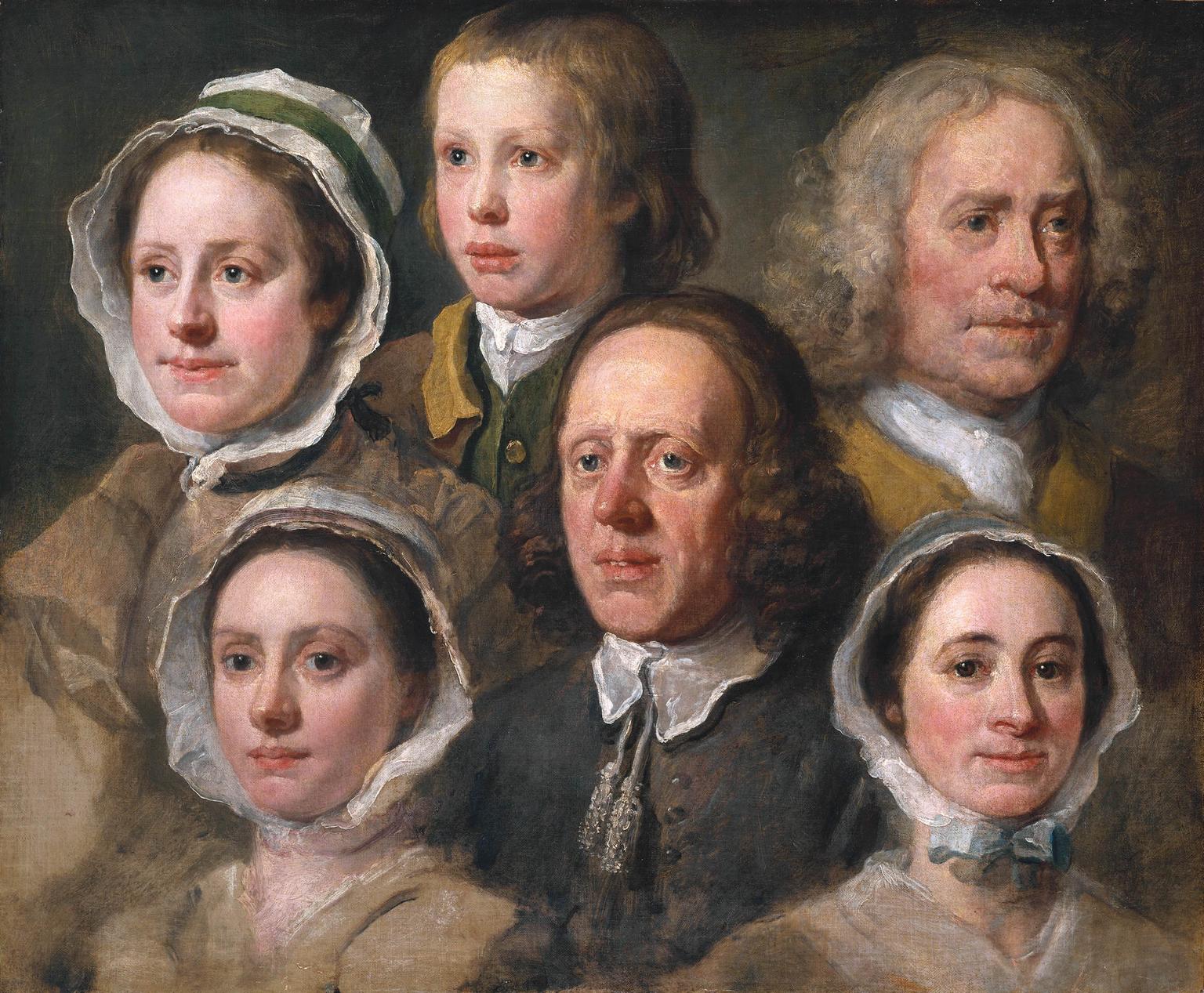
William Hogarth, Heads of Six of Hogarth’s Servants, c.1750-5.
Oil on canvas, 63 x 75.5 cm. Tate, London
Kate Retford
William Hogarth’s oil sketch, executed in the 1750s, is one of the most famous images of servants executed in the eighteenth century; a rare portrait study of six individuals, young and old, male and female. Their head and shoulders likenesses emerge from a neutral background: animated characters with vibrantly rendered flesh tones, the catchlights in their eyes adding to the sense of liveliness. This was a very personal work which remained in the possession of William Hogarth and his wife Jane, until being sold after their deaths as ‘The heads of 6 servants of Mr. Hogarth’s family’. These are members of the ‘household family’ as analysed by Naomi Tadmor: individuals not connected by blood or marriage, but co-resident under one roof, and subject to the authority of the master of the house – in this case the artist himself. It is well known that Hogarth got on well with his servants, but unfortunately none of those portrayed here have secure identifications. The older man is likely one Ben Ives; one of the maids could perhaps be a ‘Mrs Chapel’ listed as working in the Hogarths’ house; but no records survive relating to any of the others.

William Hogarth, Heads of Six of Hogarth’s Servants c.1750-5 William Hogarth 1697-1764 Purchased 1892. Courtesy of Tate London. http://www.tate.org.uk/art/work/N01374
However, as well as a group portrait, this likely also shows an artist using the faces and characters of the people around him to exercise his artistic skills for his own pleasure and benefit. The composite nature of Hogarth’s sketch, and the range of servants depicted has convinced many scholars that this is a character study in the ‘Ages of Man’ tradition, as well as a portrait. It showcases the artist’s skill in capturing the tones and textures of skin at different stages of life, as well as changes to the muscles and loss of definition through the aging process – chiming with Hogarth’s exploration of such matters in his Analysis of Beauty published at around the same date (1753). To this extent, Hogarth’s depicted servants are also models: individual likenesses, but also character studies.
Further reading
- Elizabeth Einberg, William Hogarth: A Complete Catalogue of the Paintings (New Haven and London: Yale University Press), pp.310-11
- Elizabeth Einberg and Judy Egerton, The Age of Hogarth: British Painters Born 1675-1709 (London: Tate Gallery, 1988), pp.132-4
- Ronald Paulson, William Hogarth: His Life, Art and Times, 2 vols (New Haven and London: Yale University Press, 1971), II, pp.244-6. Naomi Tadmor, ‘The Concept of the Household-Family in Eighteenth-Century England’, Past and Present, 151, 1 (1996), pp. 111-40
